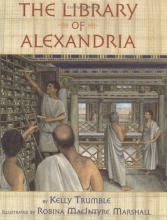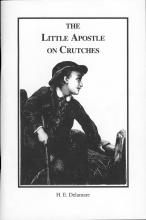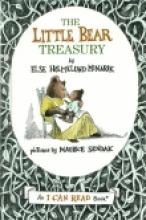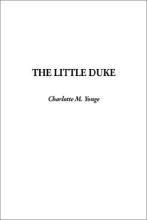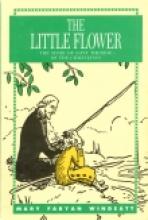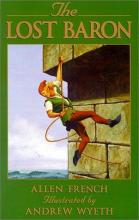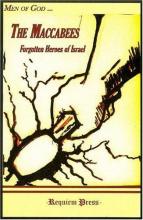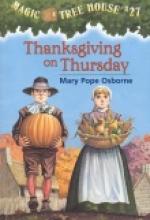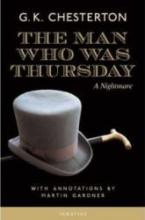No name
The Library Of Alexandria
My fourth grader and Classics-minded daughter loved this one! The product description does a good job of explaining what the book is all about:
The Library of Alexandria was the largest library of its time and a major center for learning and scholarly research, particularly in the fields of astronomy, geography, mathematics, and medicine. Caesar and Cleopatra, Erastosthenes and Euclid, Archimedes and Alexander the Great are just a few of the famous people connected to its story. Today, historians still argue about how the library was destroyed, and no one knows exactly what it looked like, yet there is no question that the library continues to fascinate and intrigue us. This extensively researched look at what we do know about the Library of Alexandria features Kelly Trumble"s short, accessible chapters, and richly detailed full-color paintings by Robina MacIntyre Marshall. Together, they tell the story of one of the wonders of the ancient world, and show how its influence as continued long after its destruction. Glossary, suggested reading, selected bibliography, index.
The Little Apostle on Crutches
The Little Apostle on Crutches by H. E. Delamare is the story of young Willie– almost nine–whose cheerful goodness touches the lives of everyone he meets.
Through his many adventures, he always strives to do what is right, making him an excellent role model for younger children. For example, he faces persecution from another boy who covets his newspaper corner. Yet, he treats the other boy with continual kindness.
Willie is unique in that he is not afraid to share his faith. When asked about the family's financial difficulties, he replies..."'We're Catholics and that helps one so much, doesn't it? It keeps one contented and happy–and teaches one to bear one's troubles.'"
Because the book was originally published in 1911, there is a quaint old-fashioned flavor to some of the language. However, this never interferes with the meaning of the story. For example, as a complement, another boy says of Willie, "'You're a bully little chap, anyhow!'"
A short 86 pages long, The Little Apostle on Crutches is republished by Catholic Heritage Curricula. Although the story would be a great a read aloud for any age, the reading level is 3-6 grade. This paperback has no illustrations, but you do not miss them.
Update from webmaster, March 2024: It appears that CHC is no longer printing this book. However, you can click here for the Internet Library copy of The Little Apostle on Crutches or find it from a variety of sources who reprint public domain works.
The Little Bear Treasury
Copyrights 1957/1960/1961
The Little Duke
This is a charming and very Catholic story of young Richard of 10th century Normandy. His father, the Duke of Normandy and a devout Christian, is cruelly murdered by a rival nobleman forcing Richard, at the tender age of eight, to become the new Duke in a time of political upheaval. Initially he finds his duties terribly boring and desires nothing more than to spend time with some jolly playmates.
As the story unfolds, Richard slowly matures in the face of the dangers and uncertainties of his position. This is particularly evident during his semi-captivity under the King of France where he learns more fully the truth of the Christian virtues that his father and the good abbot had tried to teach him. He becomes a good judge of character as he learns to recognize flatterers from true friends. Catholic virtues are especially evident in the good people of Normandy who pray and do penance for the sake of their Little Duke.
The story is a little slow in the beginning, but picks up quite nicely after a few chapters. This edition is beautifully bound in red with gold lettering and contains lovely black and white illustrations and very readable larger text.
The Little Flower
The Lost Baron
This is quite simply a great story. Even at almost 300 pages, it's surprisingly quick, enjoyable and a worthwhile read.
It is the year 1200, and England is ruled by the wicked and greedy King John (of Robin Hood fame). When the baron Eric disppears from his castle under mysterious circumstances and is presumed dead, his wife and daughter must learn to live with the baron's legal heir and distant relative – the new baron, Basil – who is gloomy and unpleasant.
Secret passages, surprising chase scenes, loyal peasants and the sting of a guilty conscience make for an engrossing tale that presents an accurate picture of feudal life and the duties of the nobility with beautiful undertones involving character, forgiveness and the triumph of good over evil. Suitable reading for fifth grade and up or as a family read-aloud.
This book was donated for review by Bethlehem Books.
The Maccabees
Based on the 1st and 2nd book of Maccabees of the Douay-Rhiems version of the Bible, The Maccabees, Forgotten Heroes of Israel is an epic tale of faithfulness to God and heroism in the face of unbelievable odds.
With the exception of a few passages of dialogue, this tale is a narrative retelling. A typical passage reads as follows. "As soon as Judas had made an end of speaking, he rushed suddenly upon them. Seron and his host were overthrown before him. He pursued Seron by the descent of the Bethoron to the plain, and there fell eight hundred men of Seron's army; the rest fled into the land of the Philistines" (34).
Once Judas forms his army, a pattern seems to set in. A king, governor, or a commander of a huge force threatens to attack Judas and his men. Judas' men become fearful. He offers them encouragement, calling upon the Lord to protect them. This revives their spirits. Then they go out and slay several thousand. Throughout the story, there are enough twists and turns to keep the reader's interest.
Why so much bloodshed? They wanted to practice their faith freely without the threat of persecution, or even death. They also wanted to restore and rededicate the Temple.
The book also includes an Introduction by Warren H. Carroll, which offers historical background to the story, summarizing the plot and a Publishers Preface, which expresses his motive for bringing this story of manly heroism to print. The Maccabees, Forgotten Heroes of Israel makes this important story from the Old Testament come alive and accessible.
Recommended for ages 14 and up.
The Magic Tree House Series
In subsequent installments they find out that the tree house is owned by Morgan LeFay of King Arthur lore. She is a librarian for Camelot and travels about collecting books. Each time the children enter the tree house they take off on another adventure. Every four books in the series deals with a theme or problem that the children have to solve.
- Books 1-4: meeting Morgan and finding out what she is all about.
- Books 5-8: finding clues and artifacts that will release Morgan from a spell cast by Merlin that turned her into a mouse.
- Books 9-12: solving riddles to pass the test to become Master Librarians.
- Books 13-16: saving books from four ancient time periods that would otherwise be lost forever.
- Books 17-20: rescuing a mysterious dog that is under a magic spell.
- Books 21-24: finding 4 special kinds of writing for Morgan's library in order to save Camelot (something to follow, something to send, something to learn, something to lend).
Jack and Annie are good foils for each other in the stories. Jack is cautious and reflective, always taking notes about the things he sees, or reading about them. Annie is more adventurous, jumping right into the action of the time period. For a few of the books, Mrs. Pope's husband collaborated with her to write non-fiction companions. The books are short enough to not be intimidating for new readers and interesting enough to keep them wanting to read more. My boys love them and read the new titles that come out even though they are much below their reading level now. They are intrigued by figuring out the kid-sized mysteries.
Some Christian groups have banned these books because they deal with magic. I did not find the use of magic offensive. There is no spell cast in the stories; we just hear that Merlin cast a spell. In fact, I thought it was kind of quaint and cute that Morgan LeFay is cast as a librarian.
In some of the stories, Jack and Annie have to learn about the religious or spiritual aspects of the time they have landed in. So, in Night of the Ninjas, they have to act out the Ninja way in order to make it through the forest without being caught by the bad guys (use nature, be nature, follow nature). In Buffalo Before Breakfast they have to imitate the ways of the Indian. This may cause some people some concern, but my children thought of it as merely historically interesting. The stories incorporate some vital historical information about the time period in which they travel, which Jack is always stopping to write down. This includes the religious beliefs of the people. When they travel to Pompeii to rescue a book, Jack reads from a research book about Ancient Roman times, including gladiators, the forum, public bathes, and myths of the gods and goddesses.
One thing I was concerned about was that occasionally in the stories Jack says about Annie's lack of caution, "I'm going to kill her." I was hoping my children wouldn't start saying that! And they haven't. One thing I wish they would imitate, though, is Jack taking notes or looking things up all the time.
These books are a good 2nd grade level reading bridge between just learning to read and harder books that can be tackled in 3rd grade. They are purely for pleasure reading!
approximately 70-80 pages each

